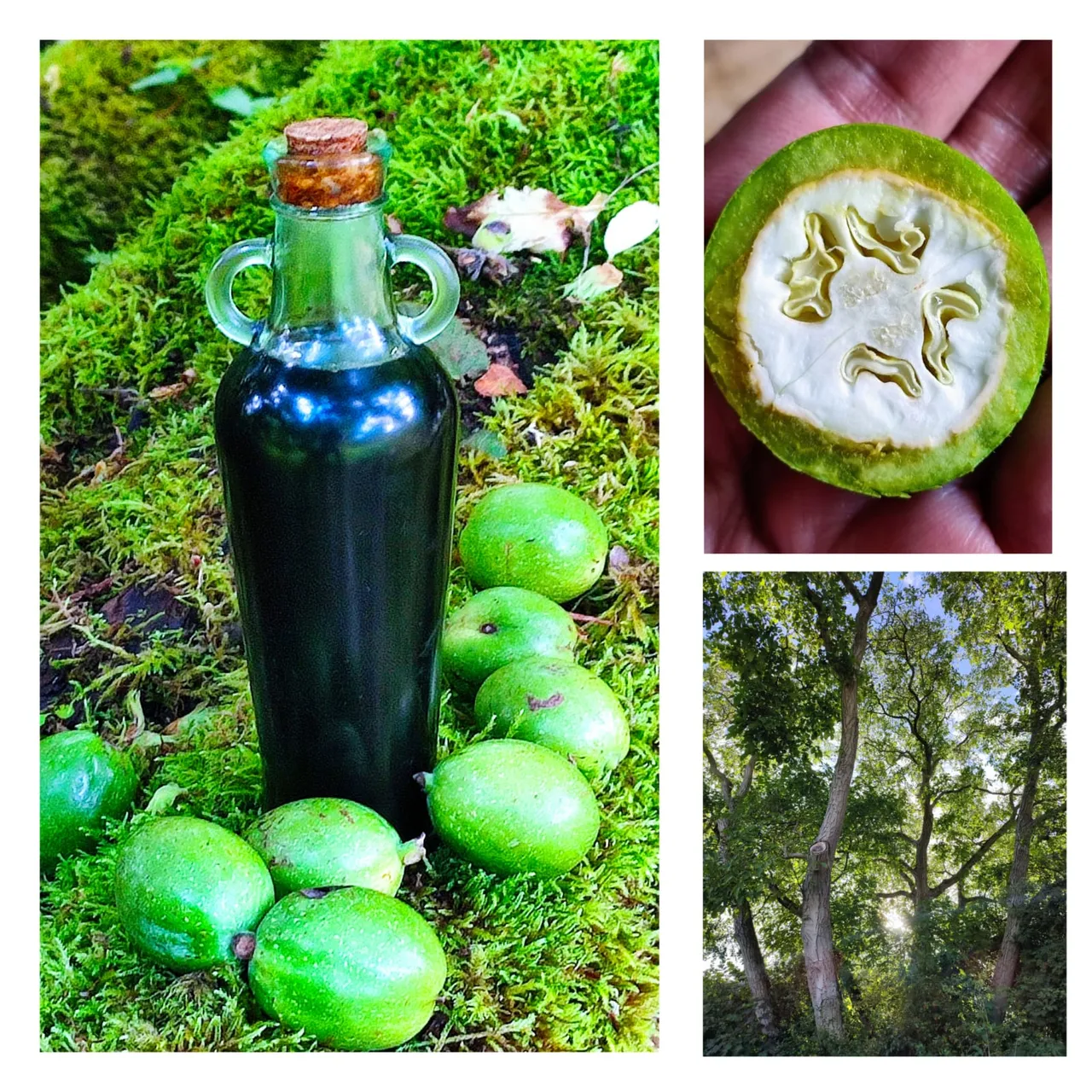

"A flavor that only a forest can provide"
This syrup is rich in walnut flavor and infused with the essence of the nuts. The sugar pulls out the flavors from the walnuts over time then the fermentation added a more unique and flavorful nutrtient densed homemade syrup.

It is the best time to pick them here in England, lucky to have few walnut trees around.

I plucked a few fruits within my reach, enough to make a couple of bottles of that beautiful syrup to enjoy from time to time.

The aroma of that unique walnut scent was in the air as I was walking home. I'm looking forward to making that beautiful syrup.
English Walnut Molasses
Ingredients:
2 cups black walnut halves or pieces
4 cups granulated sugar
Procedure:
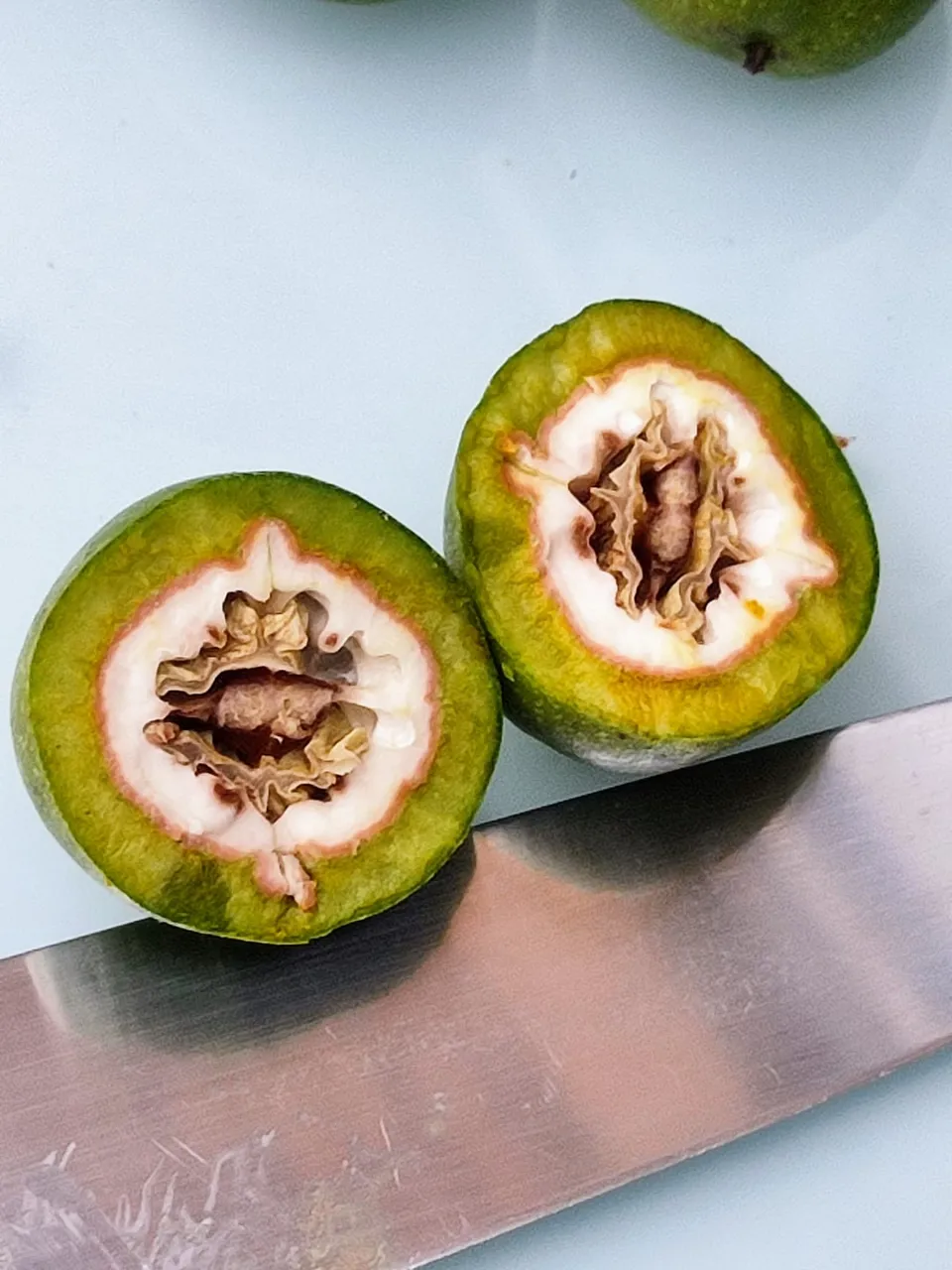
Crush the walnuts into halves.
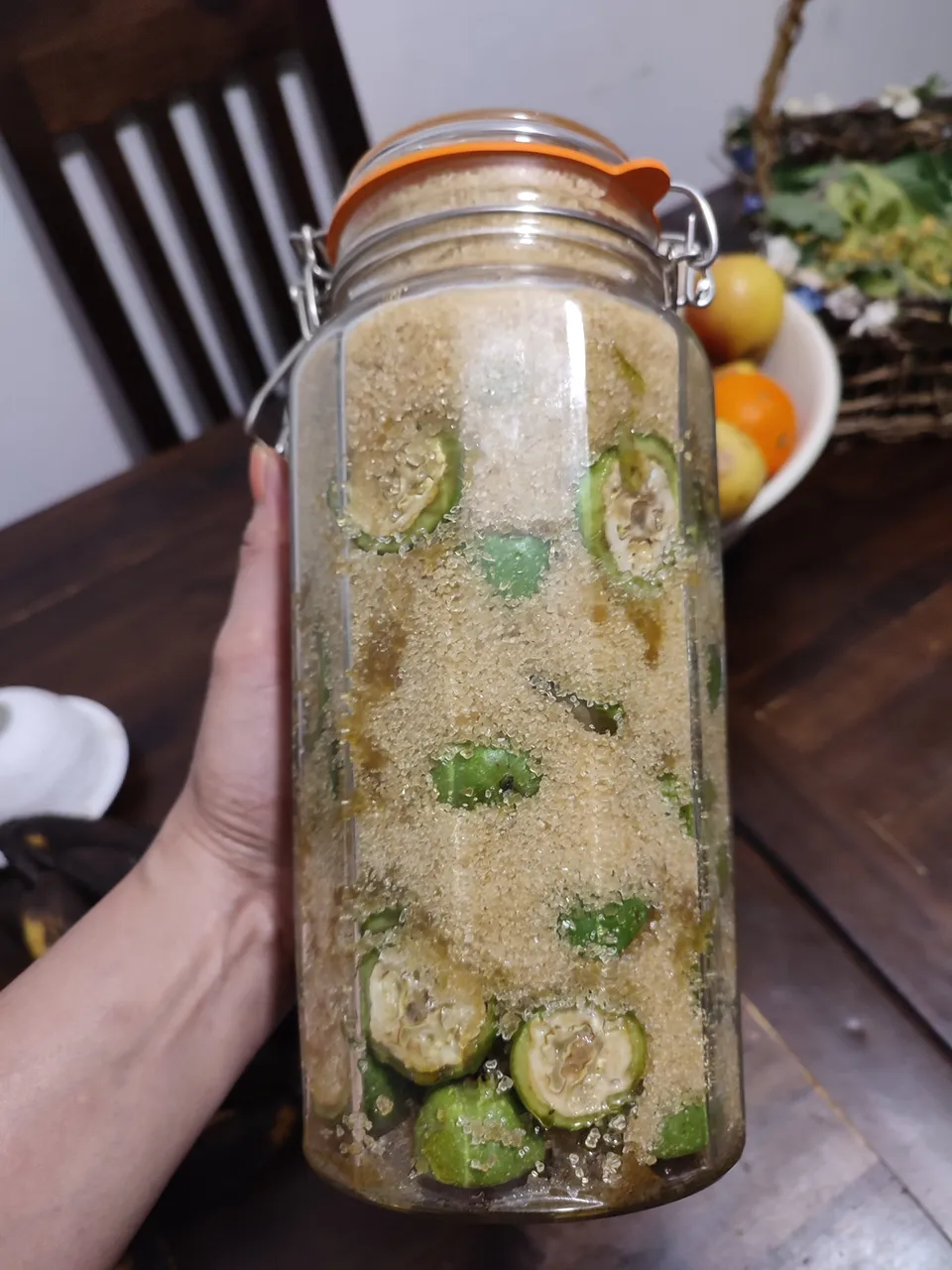
In a clean glass jar or container, start by layering the crushed walnuts and granulated sugar alternately. Begin with a layer of walnuts and then add a layer of sugar on top. Continue layering until all the walnuts and sugar are used.
Seal the jar tightly with a lid.

Infusion and Maturation:
Place the sealed jar in a cool, dark place, away from direct sunlight. After a few days, the sugar will melt, and water from the walnut will seep out.

Allow the mixture to infuse for atleast 30 days, the longer the better. I infused mine for 4 months. During this time, the sugar will extract the flavors from the walnuts and create a syrup-like consistency.

After the infusion period, empty contents into a pan and gently simmer, then strain the syrup through a fine mesh strainer or cheesecloth into another clean glass jar or container. This will separate the syrup from the solid walnut pieces.

Tannins caused the walnut husks to turn black; they serve their purpose and can be discarded.

Seal the jar and store it in a cool, dark place or in the refrigerator.
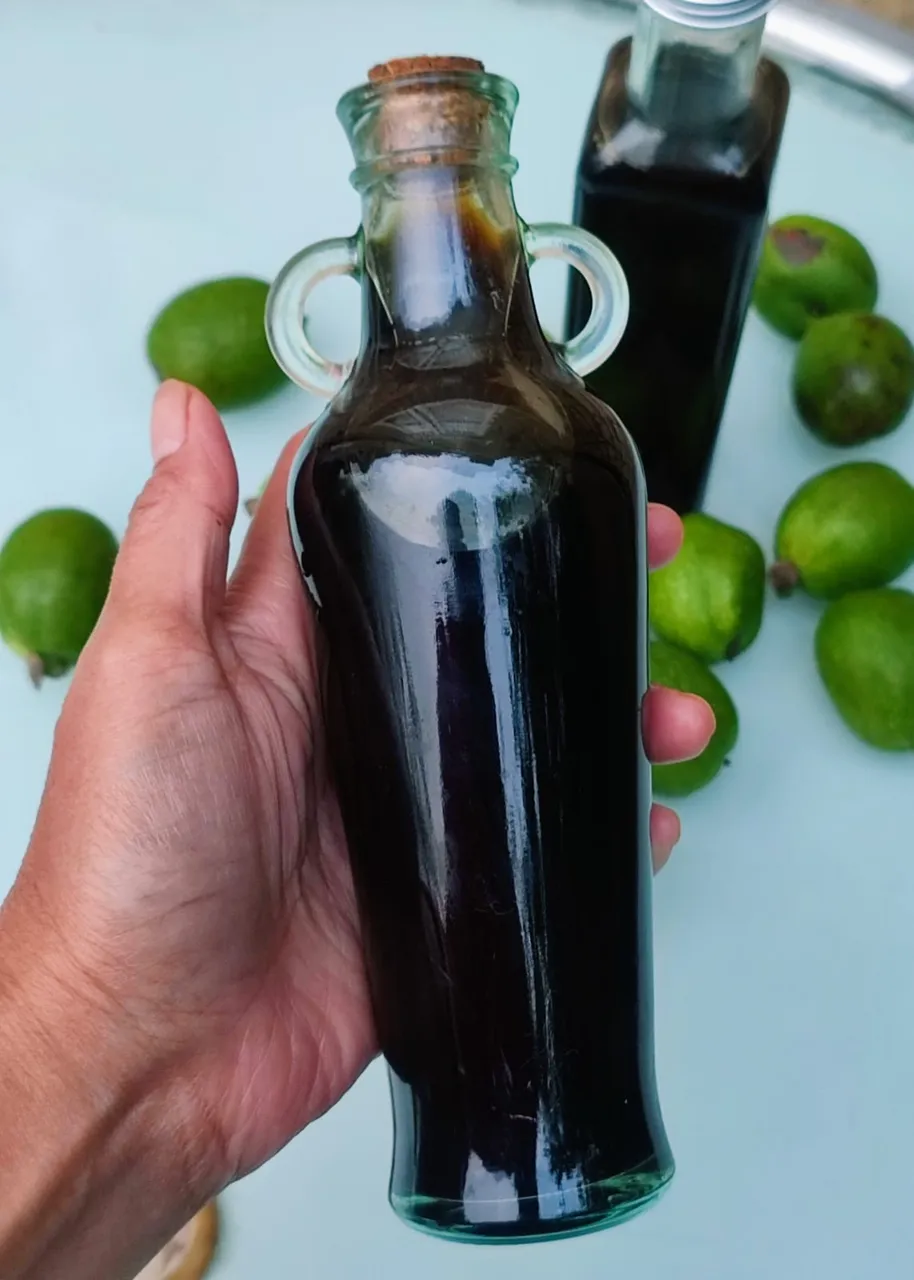
The syrup should keep well for several months.

Use the walnut syrup in a manner similar to maple syrup, adding it to dishes for flavoring or drizzling it over pancakes, waffles, desserts, and more.
🍃🍃🍃🍃🍃🍃🍃🍃🍃🍃🍃🍃🍃🍃
English Walnut Identification Guide
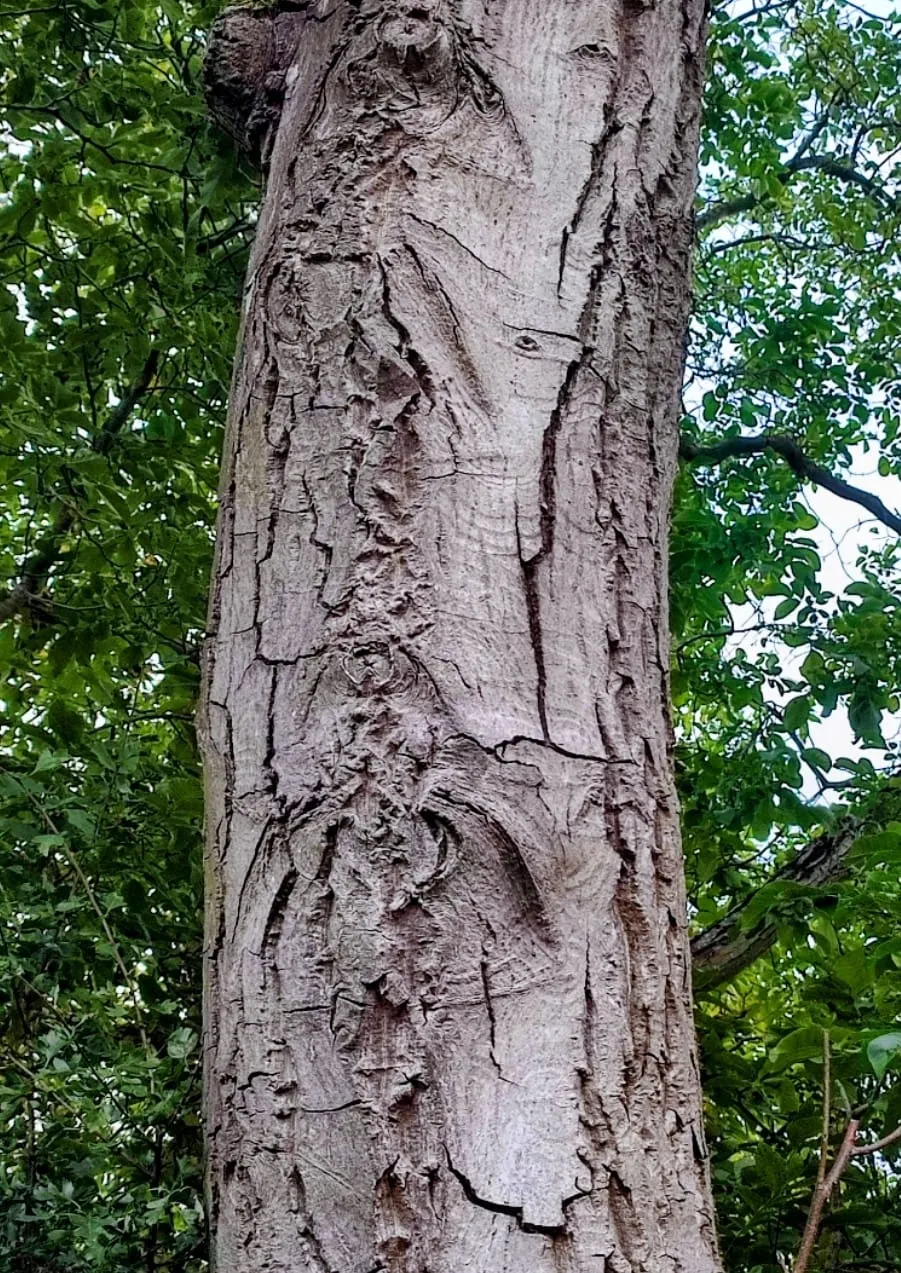
English walnut (Juglans regia) have smooth, olive-brown bark that later develops deep fissures as the tree matures. This distinctive bark pattern adds to the tree's aesthetic appeal.
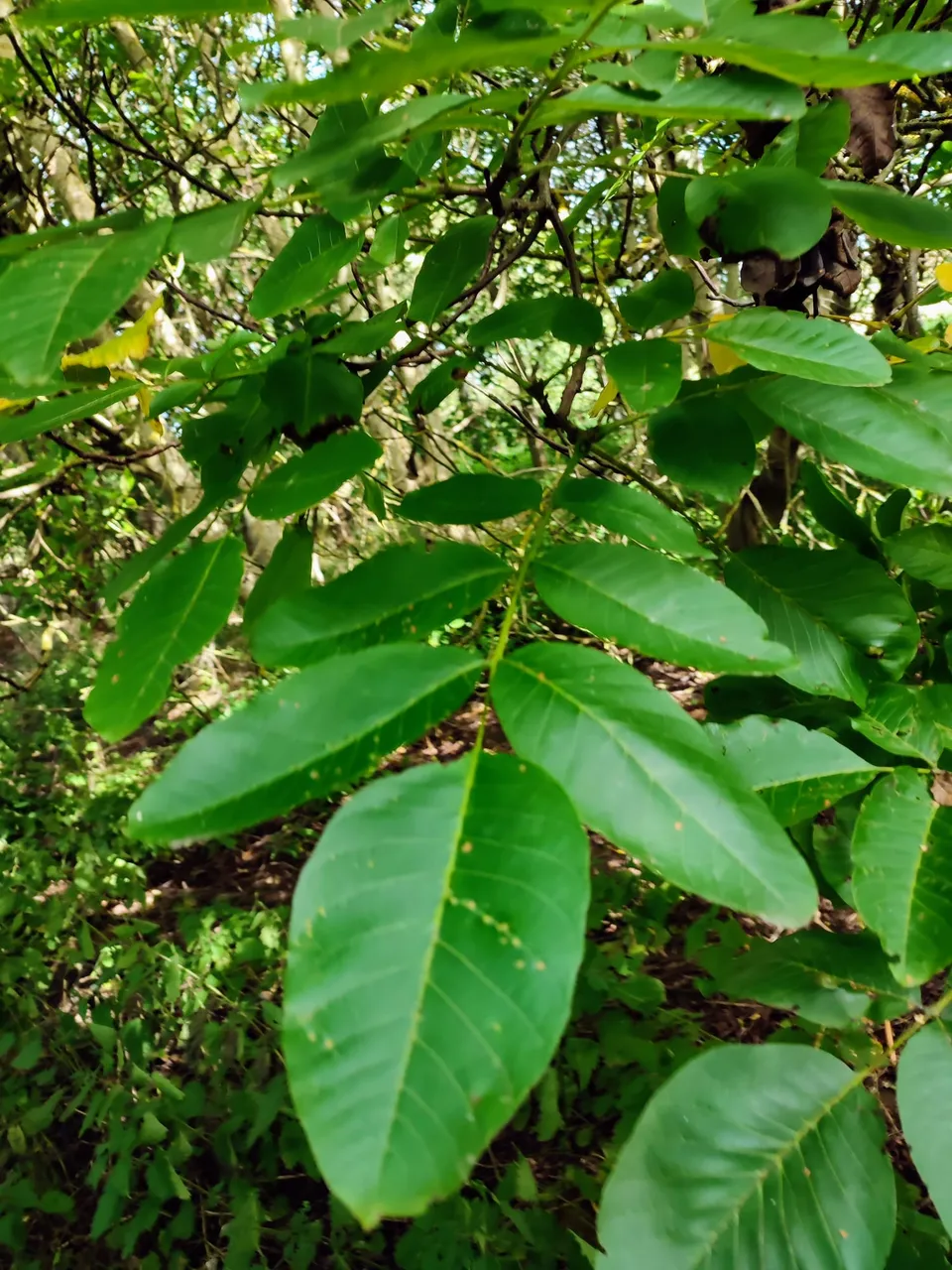
The leaves of the English walnut tree are compound and pinnate, typically consisting of 5 to 9 leaflets. Each leaflet is entire and not serrated along the edge. When crushed they are strongly aromatic. The leaves only appear late in Spring and fall at the first signs of cold weather in Autumn.

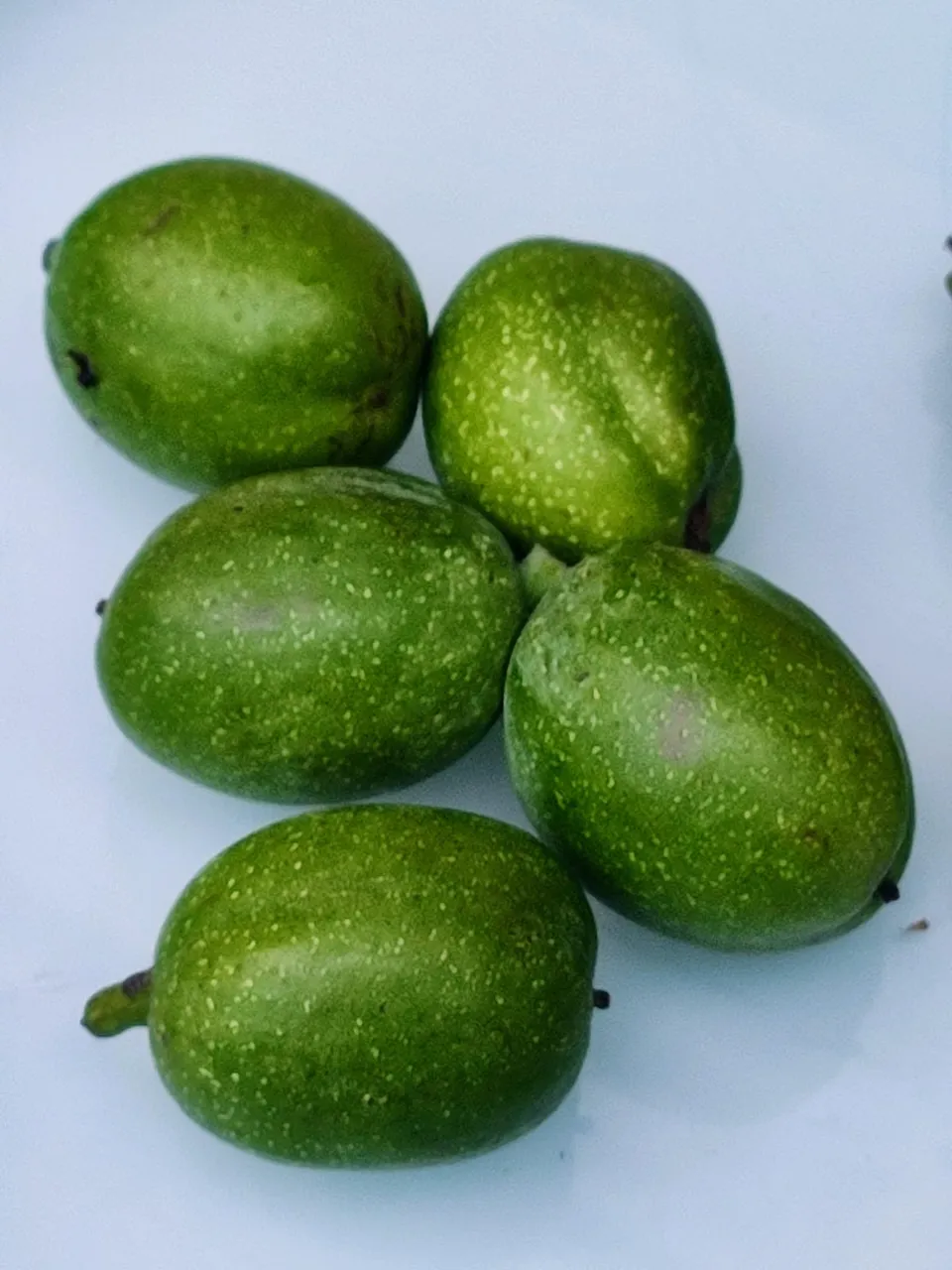
Fruit: The fruit of the English walnut tree is the well-known walnut itself. The walnuts are encased in a hard shell that is surrounded by a green husk, which later turns brown and splits open. The nuts inside are edible and have a rich, mild flavor. They are commonly used in cooking, baking, and snacking.
Nutritional Value: English walnuts are a good source of healthy fats, protein, fiber, vitamins, and minerals. They are particularly rich in omega-3 fatty acids, which are beneficial for heart health and brain function.

Cultivation: English walnut trees are widely cultivated in temperate regions for both their nuts and their wood. They prefer well-drained soil and full sun for optimal growth.
Health Benefits: The consumption of English walnuts has been associated with various health benefits, including improved cardiovascular health, reduced inflammation, and better brain function. Their nutrient content makes them a popular choice for a nutritious diet.
Wood: In addition to their nuts, English walnut trees are valued for their hardwood, which is used in fine woodworking and furniture-making due to its attractive grain and durability.
Cultural Significance: English walnuts have historical and cultural significance in many regions where they are grown. They have been used in culinary traditions and folklore for centuries.

Thank you.
Have a wonderful day!
Mariah 💚🍃